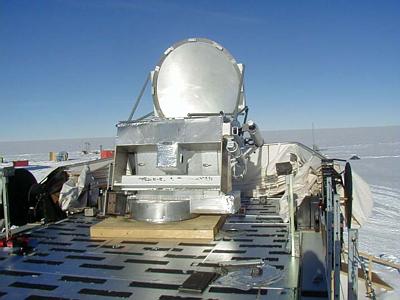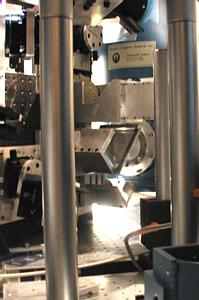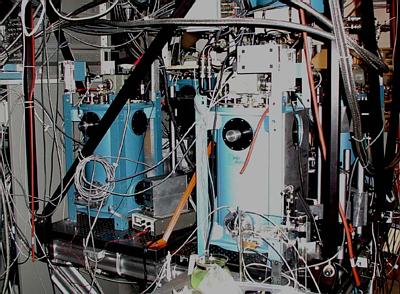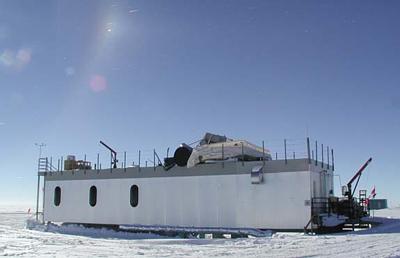5 December, 2000
Introduction to AST/RO
Like many other telescopes, the light that AST/RO looks at is gathered
with a dish and then sent through a series of mirrors to a detector. For
an optical telescope, the detector would be a camera or your eye. AST/RO
has four receivers, each designed to detect slightly different wavelengths
of light, ranging from 0.3mm to 1.5mm. These wavelengths of light are
produced by carbon and carbon monoxide isotopes changing energy states,
and is easily absorbed by water in the atmosphere. Most research
telescopes are located at the top of mountains, where there is
significantly less atmosphere between the telescope and space. Since the
south pole is one of the highest and driest places on earth, the water in
the atmosphere that would interfere with the detection of these
wavelengths of light is significantly less than at other places on the
earth. Being at the south pole allows AST/RO to detect light on a regular
basis that other observatories in warmer and more humid climates can
rarely see.

On the top of the AST/RO building is a 1.7m dish to collect light from the sky. Just like any other telescope dish, is focuses a large area of light into a smaller beam that can then be reflected through a series of mirrors into a detector.

The light from the dish comes through a hole in the ceiling into the receiver room. This shows an elaborate set of mirrors to reflect the light into the PoleSTAR dewar, on the right.

These are two of the four dewars in AST/RO. The dewars are cold containers that house the receivers.

Once the light has been collected by the receivers, it can be analyzed, data collected, and maps of molecular clouds made.

AST/RO is in the dark sector at the south pole; this is the area of the station where astronomy projects are located. The dark sector is separate from the rest of the station to reduce the amount of light that the telescopes might see from the station rather than their intended targets.
Contact the TEA in the field at
.
If you cannot connect through your browser, copy the
TEA's e-mail address in the "To:" line of
your favorite e-mail package.
|
